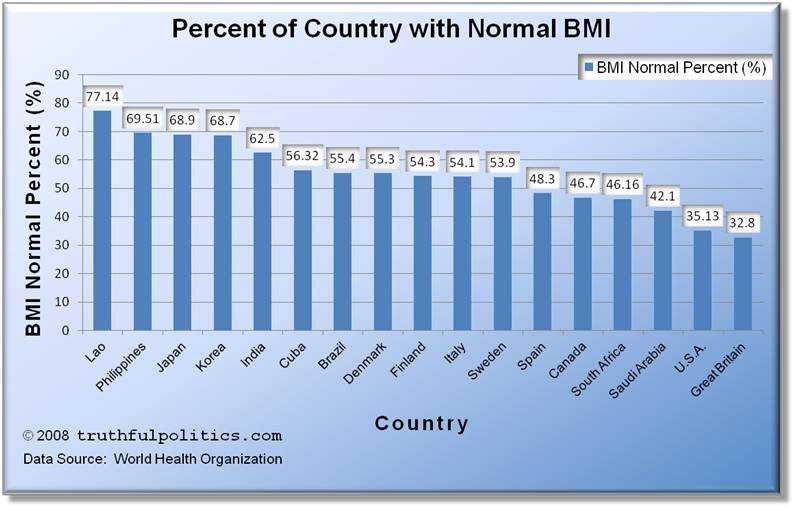BMI is an index commonly used to classify underweight, normal, overweight, and obese adults. According to the World Health Organization, it is calculated by “weight in kilograms divided by the square of the height in metres (kg/m2). For example, an adult who weighs 70kg and whose height is 1.75m will have a BMI of 22.9.” Normal BMI is within 18.50 – 24.99. A BMI greater than 25 is considered overweight.
The following chart illustrates the percentage of adults in the relative country with a normal BMI. The higher the percentage the better. The World Health Organization has the following warning about the data: “The national BMI data displayed in this graphs are empirical and have been verified that they apply internationally recommended BMI cut-off points. However, it is important to note that the data presented are not directly comparable since they vary in terms of sampling procedures, age ranges and the year(s) of data collection.”

Sorry, the comment form is closed at this time.